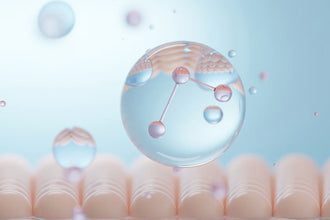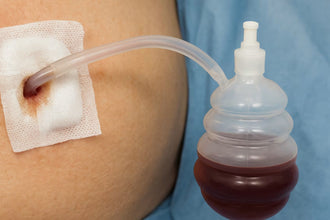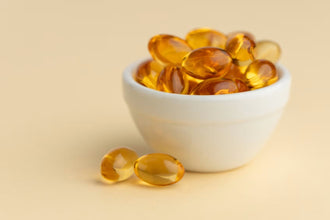Silicone Scar Gel and Its Role in Healing Deep Burns: What You Need to Know
When we're talking about healing from deep burns, the recovery process can be tricky, and you have to pay close attention to how the wound is doing. One of the best ways to help it get better is by applying a specially formulated silicone scar gel.
It's like a cream you put directly on your skin, and many people have already benefited from its scar healing properties. This article's gonna dive into how silicone scar gel helps with healing deep burns, the mechanism of action, and how to get the most out of it.
Deep Burns and Scar Formation
| Burn Type | Characteristics | Potential Complications |
|---|---|---|
| First-Degree Burns | Affect only the outer layer of the skin (epidermis), cause redness, minor pain, no blisters. | Minimal scarring, usually heals within a week. |
| Second-Degree Burns | Affect both the outer and underlying skin layers, cause blisters, swelling, and severe pain. | Higher risk of infection, potential for hypertrophic scarring. |
| Third-Degree Burns | Extend through all skin layers, causing white or charred skin, numbness due to nerve damage. | High risk of infection, significant scarring, and possible skin grafting. |
Really bad burns, usually called second-degree or third-degree burns, are the ones that get deep into the skin and can really mess up your tissues. These burns are extremely painful, cause blisters, and can make it really easy for you to get an infection and end up with a prominent scar.

When your skin starts to heal, your body sends signals to produce collagen fibers that fix the damaged tissue. However, this very normal process can lead to the formation of hypertrophic or keloid scars, which are raised, thick, don't look great, and can limit your movement.
Making sure you're managing scars right is really important for healing and minimizing scar size and visibility. Silicone scar gel has become really popular with doctors and patients alike because it's been scientifically shown to help reduce scars.
What Is Silicone Scar Gel
Silicone scar gel is a skin product that's meant to make scars look better by creating a good environment for healing to happen. How does it manage that? Actually, the silicone gel sets up a kind of protective barrier over the scar. This barrier keeps the scar moist, controls the creation of a protein called collagen (that we mentioned earlier), and shields the wound from particles in the environment that could interfere with healing.
The Mechanism of Action
Keeping Things Moist and Hydrated: The silicone scar gel sets up a half-sealed layer that traps moisture inside. This moisture is incredibly important for softening and pressing down scar tissue so it becomes less visible over time. This also means that the skin is less likely to split open or have other problems.
Controlling Collagen: Collagen is a protein that's crucial when it comes to healing wounds and making fresh skin. But, if you make too much collagen, it can lead to chunky scars like keloids. Thankfully, silicone scar gels can control collagen production to make sure there's no extra scar tissue.
Why You Should Consider Silicone Scar Gel for Serious Burns
| Benefit of Silicone Scar Gel | Description | Evidence of Effectiveness |
|---|---|---|
| Easy Application | Available in various forms such as gel, strips, and tape, allowing easy integration into daily routines. | Numerous user reviews and clinical studies support its usability and convenience. |
| Compatibility with All Skin Types | Hypoallergenic properties make it suitable for even sensitive skin. | Clinical reports indicate low rates of allergic reactions. |
| Proven Efficacy in Scar Reduction | Demonstrated to improve scar appearance and reduce hypertrophy across various scar types. | Studies published in wound treatment journals confirm its effectiveness. |
| Protection from Environmental Factors | Creates a protective barrier against bacteria and pollutants that may delay healing. | Research supports its ability to provide a sterile environment for wound healing. |
Actually, silicone scar gel gets the green light from many skin doctors and cosmetic surgery pros, thanks to its wins in battling tough burn scars. Here's why going for silicone gel can be a great idea:
- Easy to Use: Comes in a variety of shapes like gel, strips, or tape. The silicone’s effortless application will easily help you integrate this into your daily routine.
- Good for All Skin Types: Doesn't give people a hard time and can work for everyone, even if you've got sensitive skin that got badly burnt. Silicone scar products are extremely hypoallergenic (exceptions may occur).
- Proven to Work: There are countless scientific studies out there showing how silicone helps with improving scar appearance and reducing hypertrophy for all kinds of scars.
Other Benefits
Shielding from Outside Factors: The protective layer made by the silicone gel keeps the wound safe from dirt, bacteria, and other stuff that could slow healing or make scars look worse.

Pain and Itch Relief: A lot of people say they feel less uncomfortable and itchy when they use silicone scar gel. These feelings are pretty common while skin heals and tightens up. Luckily, easing these symptoms can make the person feel a whole lot better during their recovery stage.
The silicone scar gel alone works really well, but pair it with some extra treatments and you've got yourself a strong scar-beating combo. Here's a bunch of ideas you could look into:
-
Keeping the Sun Out: You've got to keep the scar from basking under the sun. It's quite important to avoid too much color in the scar and any extra skin damage. Make sure the area is covered by clothes when you’re outside, or use sunscreen. This will keep the gel working well and result in a more even-toned and smooth scar.
-
Eat Well and Stay Hydrated: What you eat and how much you sip counts a lot in fixing up your skin and getting it back on track. Do your body a favor and consume more A, C, and E vitamins, as well as minerals like zinc and magnesium. Post-injury nutrition can really help your body sort out its own healing.
Conclusion
To wrap things up, silicone scar gel is still a top pick when it comes to non-surgical ways to deal with scars from serious burns. It can control collagen buildup, lock in moisture, and protect the wounded area; this makes it a good asset both in hospitals and home care situations. Understanding the way silicone scar gel works - its perks and the right way to use it - can really help people recover much better from their burns.
Plus, combining silicone scar gel together with other treatments increases the efficiency of the product, so make sure to get the right nutrients in while keeping the sun out. Always have a chat with your doctor to figure out the best scar handling method for you, and have a safe and effective healing journey.
References:
https://stanfordhealthcare.org/medical-conditions/skin-hair-and-nails/burns/stages.html
https://www.ncbi.nlm.nih.gov/books/NBK470176/
https://www.ncbi.nlm.nih.gov/pmc/articles/PMC7949016/
https://www.ncbi.nlm.nih.gov/pmc/articles/PMC2918339/
https://www.nhs.uk/conditions/keloid-scars/
General Disclaimer: All information here is for educational purposes only and is not meant to cure, heal, diagnose nor treat. This information must not be used as a replacement for medical advice, nor can the writer take any responsibility for anyone using the information instead of consulting a healthcare professional. All serious disease needs a physician.
















